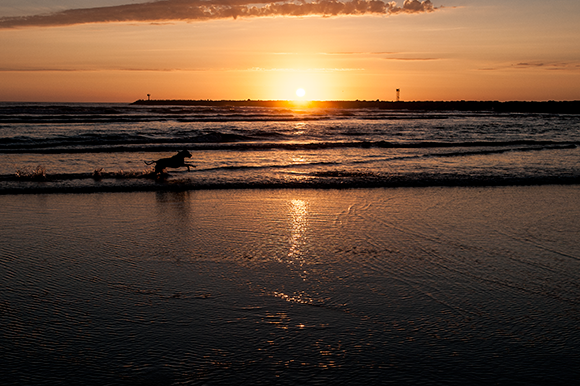The Direction of Light
The direction that the light comes from determines where the shadows fall. Shadows help define the subject, and create depth in your images. The direction that the light comes from can also reveal or hide parts of your subject. Consider how the direction of the sunlight changes during the day, and how that changes how the landscape looks. Early in the day, there are long, deep shadows that slowly shorten and, finally, disappear as the sun reaches midday. Then the shadows start to grow in the other direction as the sun drops and finally sets.
Sometimes, it is easy to see the direction of the light, either by seeing the actual light or looking at the shadows. For example, when photographing concerts, it’s clear where the light is coming from, as it is when shooting in the early morning or late evening when the sun is low on the horizon, as shown in Figure 5.5.

5.5 For this shot, the built-in light meter gave settings that seemed too bright, so I dialed in -2 exposure compensation to darken the image by 2 stops. Exposure: ISO 200, f/8.0, 1/800 second.
The following are the different directions of light:
▶ Frontlighting. Chances are, at some point, you were told that in order to take photos you needed to place the subject in direct sunlight or have the sun at your back. This was acceptable advice when you gave the control of your images to the camera, but it ...
Get Nikon D3200 Digital Field Guide now with the O’Reilly learning platform.
O’Reilly members experience books, live events, courses curated by job role, and more from O’Reilly and nearly 200 top publishers.

